Astro (original) (raw)

Home - Search - Browse - Alphabetic Index: 0- 1- 2- 3- 4- 5- 6- 7- 8- 9
A- B- C- D- E- F- G- H- I- J- K- L- M- N- O- P- Q- R- S- T- U- V- W- X- Y- Z
Astro
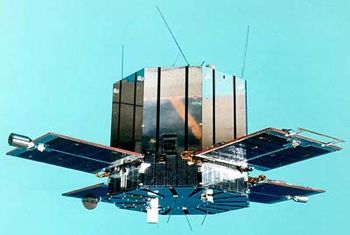
SS-07 Hinotori
Credit: Manufacturer Image
Japanese x-ray astronomy satellite. X-ray experiments. Launching organization: ISAS (Institute of Space and Astronautical Science).
AKA: Asuka;Ginga. Status: Operational 1981. First Launch: 1981-02-21. Last Launch: 1993-02-20. Number: 4 . Gross mass: 700 kg (1,540 lb).
X-ray observation of X-ray stars in our galaxy as well as X-ray galaxies using a scintillating proportional counter, a transient X-ray source monitor, an X-ray focusing collector, a radiation belt monitor, a gamma ray burst detector and a star sensor.
More at: Astro.
Subtopics
| Astro E Japanese x-ray astronomy satellite. ASTRO-E was to be fifth in a series of Japanese astronomy satellites devoted to observations of celestial X-ray sources. Astronomy, X-Ray satellite operated by ISAS, NASA, Japan. Launched 2000 - 2005. |
|---|
| Akari Japanese infrared astronomy satellite. Astro F (Akari). Carried a 0.67m-diameter liquid-helium-cooled infrared telescope with detectors ranging from the near infrared to 60 and 170 micron channels in the far IR. |
|---|
Family: Astronomy, X-ray astronomy satellite. Country: Japan. Launch Vehicles: Mu, Mu-3S, Mu-3S-II, Mu-3. Launch Sites: Kagoshima, Kagoshima M. Bibliography: 2, 279, 6, 6365, 12112, 12113, 12114, 12115, 12116.
Photo Gallery
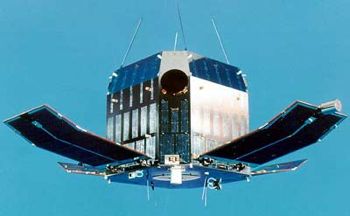 |
SS-08 TenmaCredit: Manufacturer Image |
|---|
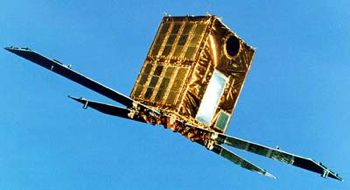 |
GingaCredit: Manufacturer Image |
|---|
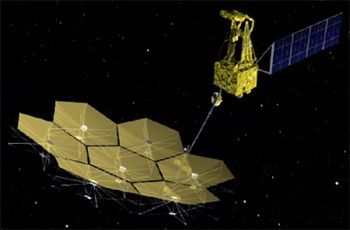 |
Astro GCredit: Manufacturer Image |
|---|
 |
Astro HCredit: Manufacturer Image |
|---|
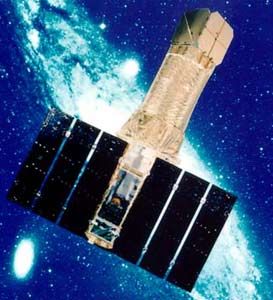 |
AsukaCredit: Manufacturer Image |
|---|
1981 February 21 - . 00:30 GMT - . Launch Site: Kagoshima. Launch Complex: Kagoshima M. LV Family: Mu. Launch Vehicle: Mu-3S.
- SS-07 Hinotori - . Payload: Astro A. Mass: 185 kg (407 lb). Nation: Japan. Agency: ISAS. Class: Astronomy. Type: X-ray astronomy satellite. Spacecraft: Astro. Decay Date: 1991-07-11 . USAF Sat Cat: 12307 . COSPAR: 1981-017A. Apogee: 279 km (173 mi). Perigee: 274 km (170 mi). Inclination: 31.30 deg. Period: 90.10 min. Hinotori (ASTRO-A). Launching organisation: Institute of Space and Aeronautical Science, University of Tokyo. Investigation of solar flare by X-ray telescope and spectrograph. .
1983 February 20 - . 05:10 GMT - . Launch Site: Kagoshima. Launch Complex: Kagoshima M. Launch Pad: M1. LV Family: Mu. Launch Vehicle: Mu-3S.
- SS-08 Tenma - . Payload: Astro B. Mass: 185 kg (407 lb). Nation: Japan. Agency: ISAS. Class: Astronomy. Type: X-ray astronomy satellite. Spacecraft: Astro. Decay Date: 1988-12-17 . USAF Sat Cat: 13829 . COSPAR: 1983-011A. Apogee: 438 km (272 mi). Perigee: 431 km (267 mi). Inclination: 31.50 deg. Period: 93.30 min.
X-ray experiments. Astro-B (Tenma). Launch 0510 GMT. Launching organization: ISAS (Institute of Space and Astronautical Science). X-ray observation of X-ray stars in our galaxy as well as X-ray galaxies using a scintillating proportional counter, a transient X-ray source mo nitor, an X-ray foucsing collector, a radiation belt monitor, a gamma ray burst detector and a star sensor.
1987 February 5 - . 06:30 GMT - . Launch Site: Kagoshima. Launch Complex: Kagoshima M. Launch Pad: M1. LV Family: Mu. Launch Vehicle: Mu-3S-II.
- Ginga - . Payload: Astro C. Mass: 420 kg (920 lb). Nation: Japan. Agency: ISAS. Class: Astronomy. Type: X-ray astronomy satellite. Spacecraft: Astro. Decay Date: 1991-11-01 . USAF Sat Cat: 17480 . COSPAR: 1987-012A. Apogee: 450 km (270 mi). Perigee: 395 km (245 mi). Inclination: 31.00 deg. Period: 93.00 min. Studyied galactic gamma ray, X-ray sources. ASTRO-C (Ginga). Observation of variabilities of X-rays from active galactic nuclei and galactic compact sources. Launching organization ISAS. Launch time 0630 GMT. .
1993 February 20 - . 02:20 GMT - . Launch Site: Kagoshima. Launch Complex: Kagoshima M. Launch Pad: M1. LV Family: Mu. Launch Vehicle: Mu-3S-II.
- Asuka - . Payload: Astro D. Mass: 420 kg (920 lb). Nation: Japan. Agency: ISAS. Program: Astro. Class: Astronomy. Type: X-ray astronomy satellite. Spacecraft: Astro. Decay Date: 2001-03-02 . USAF Sat Cat: 22521 . COSPAR: 1993-011A. Apogee: 646 km (401 mi). Perigee: 539 km (334 mi). Inclination: 31.10 deg. Period: 96.50 min. X-ray imaging and astronomy. Imaging and spectroscopic observations of various astronomical objects (stars and galaxies) in the X-ray band. Launching organization ISAS. Launch time 0200 GMT. Astro-D 'ASCA'..
2000 February 10 - . 01:30 GMT - . Launch Site: Kagoshima. Launch Complex: Kagoshima M-V. Launch Vehicle: M-V. FAILURE: First stage failure. An anomalous vibration was detected 25 seconds after launch. At 41 seconds ceramic heat shields in the first stage nozzle broke and fell off, and thrust vector control on the nozzle was lost.. Failed Stage: 1.
- Astro E - . Mass: 1,680 kg (3,700 lb). Nation: Japan. Agency: ISAS. Program: Astro. Class: Astronomy. Type: X-ray astronomy satellite. Spacecraft Bus: Astro. Spacecraft: ASTRO E. COSPAR: F000210A. Apogee: 200 km (120 mi).
Spacecraft was injected in very low perigee orbit and reentered. X-ray astronomy satellite. Stage 1 lost control, and separated with the rocket off-course at 75 seconds in the flight. Stage 2 burned correctly and separated at 218 seconds, followed by the third stage burn at 621 seconds. Last signals were received at 20 minutes after launch. ASTRO-E was to have separated from the third stage at 23 minutes, but ended in an orbit with a perigee of only 80 km and an apogee of 410 km. It probably reentered on the first orbit at around 0230 - 0300 GMT somewhere between East Africa and western China.
2005 July 10 - . 03:30 GMT - . Launch Site: Kagoshima. Launch Complex: Kagoshima M-V. Launch Vehicle: M-V.
- Suzaku - . Payload: Astro E2. Mass: 1,680 kg (3,700 lb). Nation: Japan. Agency: JAXA. Manufacturer: Toshiba. Class: Astronomy. Type: X-ray astronomy satellite. Spacecraft Bus: Astro. Spacecraft: ASTRO E. USAF Sat Cat: 28773 . COSPAR: 2005-025A. Apogee: 573 km (356 mi). Perigee: 562 km (349 mi). Inclination: 31.40 deg. Period: 96.00 min.
Delayed from February, June 26, July 6 and 8, 2005. CUTE-1.7 nanosat mistakenly reported on this flight. Astro-E2 was renamed Suzaku (after a legendary red bird) after launch. It replaced the Astro-E, which never reached orbit due to an M-V-4 launch failure in 2000. The satellite had five 0.4-meter diameter X-ray telescopes, one with an XRS microcalorimeter and the other four with X-ray CCD cameras. However it was revealed that the XRS failed on 9 August due to leaking of helium coolant.
2006 February 21 - . 21:28 GMT - . Launch Site: Kagoshima. Launch Complex: Kagoshima M-V. Launch Vehicle: M-V.
- Astro F (Akari) - . Mass: 960 kg (2,110 lb). Nation: Japan. Agency: JAXA. Manufacturer: Toshiba. Program: Astro. Class: Astronomy. Type: Infrared astronomy satellite. Spacecraft Bus: Astro. Spacecraft: Akari. USAF Sat Cat: 28939 . COSPAR: 2006-005A. Apogee: 719 km (446 mi). Perigee: 705 km (438 mi). Inclination: 98.20 deg. Period: 99.00 min. Carried a 0.67m-diameter liquid-helium-cooled infrared telescope with detectors ranging from the near infrared to 60 and 170 micron channels in the far IR. It was to carry out the first far infrared sky survey since IRAS in 1983..
Home - Search - Browse - Alphabetic Index: 0- 1- 2- 3- 4- 5- 6- 7- 8- 9
A- B- C- D- E- F- G- H- I- J- K- L- M- N- O- P- Q- R- S- T- U- V- W- X- Y- Z
© 1997-2019 Mark Wade - Contact
© / Conditions for Use